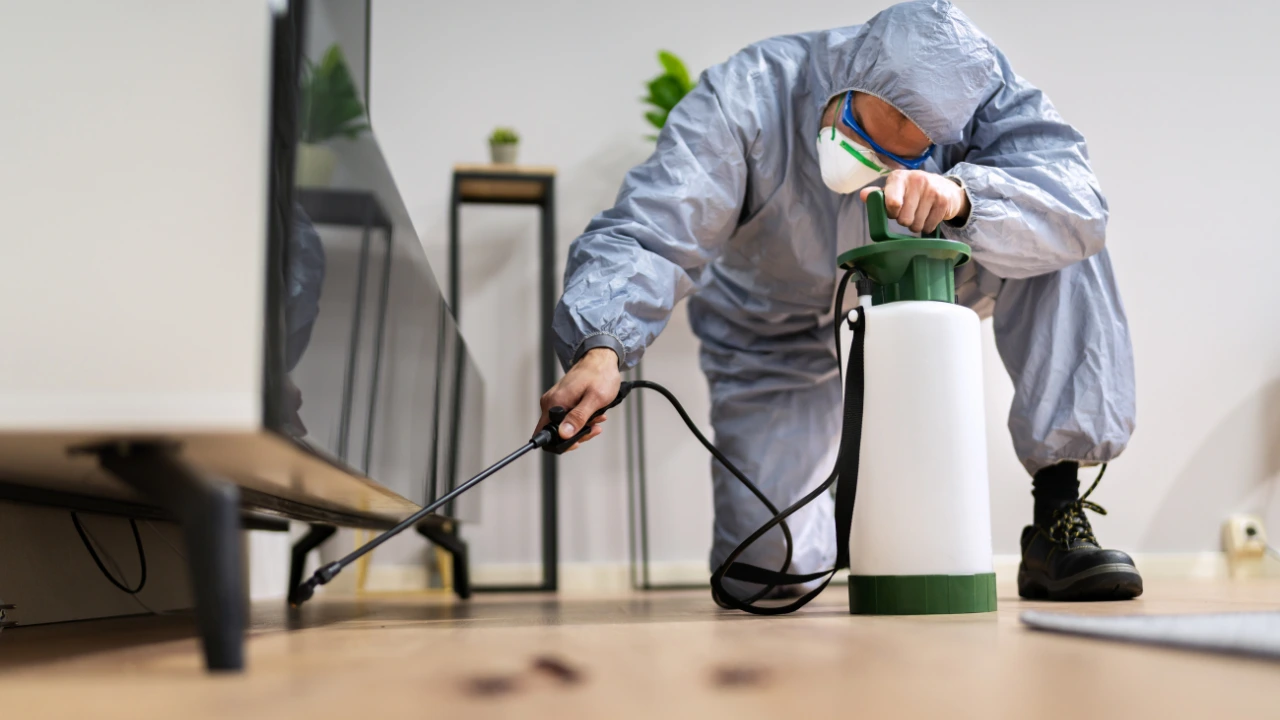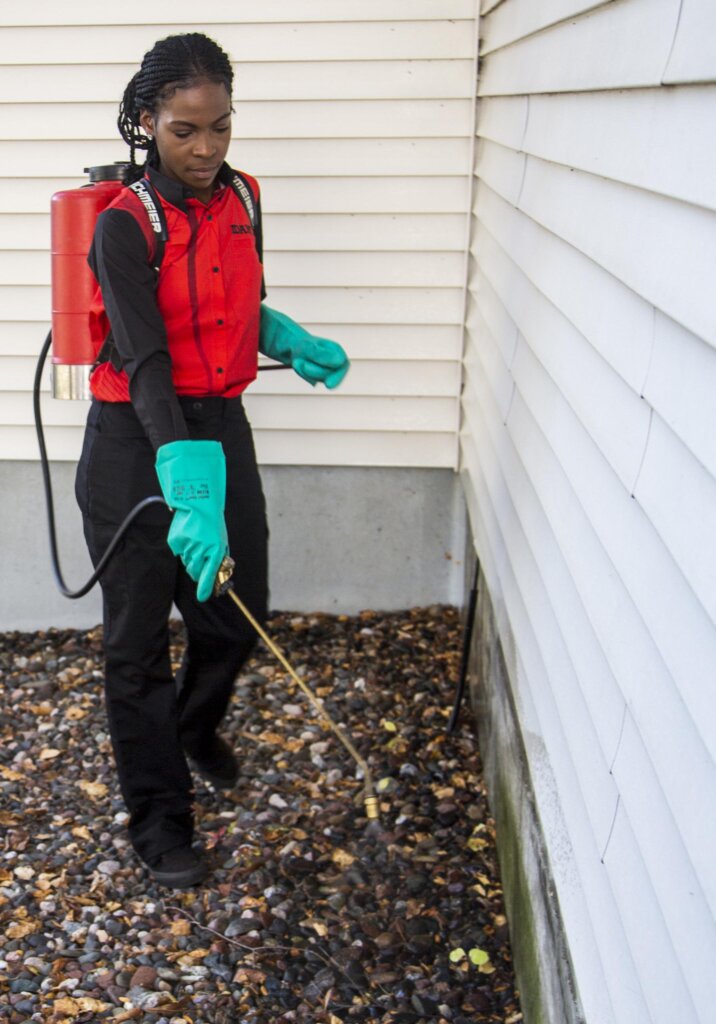Why Property Owners Rely on Pest Control Lockhart for Their Needs
Why Property Owners Rely on Pest Control Lockhart for Their Needs
Blog Article
Discovering Problem and Treatment Strategies worldwide of Insect Control
The landscape of bug control includes a myriad of difficulties, specifically as problems of usual household bugs remain to advance. Recognizing the actions and reproductive patterns of these nuisances is vital for developing efficient therapy techniques. By incorporating safety nets with advanced management strategies, such as Integrated Pest Management (IPM), homeowners can better secure their environments. However, the efficiency of these approaches might vary significantly based upon specific conditions. What underlying factors add to the success or failing of these strategies in different settings?

Typical Home Vermin
When it concerns handling our space, understanding usual home bugs is important. These insects not only interrupt our convenience but can also position wellness threats and damage property. The most widespread family pests consist of ants, roaches, rodents, termites, and bed insects.
Ants, frequently seen foraging in kitchens, can pollute food and develop large nests. Rodents, including computer mice and rats, can trigger architectural damages and carry conditions like hantavirus and salmonella.
Recognizing the indicators of these pests, such as droppings, nests, or attack marks, is important for early intervention (Pest Control Lockhart). Proper hygiene practices, sealing entry points, and keeping a clutter-free atmosphere are efficient preventative measures. By identifying these typical home parasites and understanding their habits, house owners can take proactive steps to alleviate infestations, making sure a much healthier living setting
Recognizing Parasite Infestations
Pest problems can rise promptly, turning a minor inconvenience into a significant issue otherwise resolved without delay. Recognizing the nature of these problems is essential for reliable monitoring. Bugs can invade residential and industrial areas for various reasons, consisting of the search for food, sanctuary, or reproducing premises. Common elements contributing to invasions consist of poor sanitation, structural vulnerabilities, and seasonal modifications that drive bugs inside.
Identifying the kind of bug is crucial, as different varieties exhibit different habits and reproductive prices. For instance, rodents may establish nests in surprise areas while insects like roaches flourish in damp environments. Early discovery frequently depends upon acknowledging signs such as droppings, munch marks, or uncommon sounds, which can show a trouble prior to it becomes serious.
Ecological conditions likewise play an essential function in bug expansion. Warm, moist environments can promote the fast development of bug populations, while changes in landscape design or building and construction can accidentally produce conducive environments. For that reason, normal examinations and preventative procedures are paramount to reducing the threat of infestations. An informed method to comprehending these dynamics lays the groundwork for reliable insect management methods in the future.
Therapy Techniques and Strategies
Efficient treatment techniques and techniques are essential for alleviating insect problems and bring back a secure atmosphere. A complex method is often best, integrating chemical, organic, and mechanical methods customized to the particular visit this web-site parasite and the seriousness of the problem.
Chemical treatments include the usage of insecticides and herbicides, which can successfully eliminate bugs. Correct application and adherence to safety and security standards are crucial to lessen threats to human beings and non-target organisms. Integrated Insect Administration (IPM) urges the judicious use of chemicals as a last resource, counting rather on surveillance and threshold levels to identify intervention requirements.
Organic control techniques include introducing all-natural killers or bloodsuckers to minimize insect populations. This approach is increasingly preferred, specifically in farming settings, as it promotes ecological sustainability.
Mechanical approaches, such as traps and barriers, provide prompt alleviation from insects without introducing chemicals. Alternatives consist of sticky traps for pests or physical obstacles for rodents.
Inevitably, the selection of treatment method need to think about the particular pest, the setting, and prospective influence on human wellness and ecological communities. A well balanced combination of these strategies can properly handle infestations while advertising long-term insect control options.
Preventative Actions for Residence
Proactively addressing parasite problems before they escalate is essential for maintaining a healthy home environment (Pest Control Lockhart). Carrying out efficient preventative measures can significantly minimize the likelihood of problems, eventually guarding both your building and well-being

Proper landscaping also plays an essential role in prevention. Maintaining hedges and trees cut away from the home decreases the possibilities next page of insects discovering their method indoors. Guarantee that drainage systems are operating effectively to avoid standing water, which can draw in insects and other pests.
Finally, routine inspections are suggested. Consistently looking for signs of pest task permits very early intervention. By taking on these safety nets, home owners can produce a setting that is less friendly to bugs, thereby boosting their overall lifestyle and reducing the demand for extensive parasite control interventions.
Industrial Pest Control Methods
A comprehensive technique to commercial insect control is crucial for companies intending to maintain a risk-free and sanitary setting. Effective methods entail a combination of routine examinations, employee training, and the application of Integrated Parasite Management (IPM) methods.
Normal examinations enable early detection of bug task, enabling timely treatment. Organizations should develop a routine schedule for these assessments, focusing on high-risk areas such as kitchen areas, storage space spaces, and garbage disposal websites. Staff member training is just as crucial; staff should be educated on the signs of pest infestations and the significance of reporting them right away.
Carrying out IPM methods assists reduce insect problems sustainably. This includes habitat alteration, such as securing entrance points and decreasing clutter, as well as using all-natural deterrents prior to turning to chemical treatments.

Moreover, teaming up with a qualified bug control supplier makes sure access to expert expertise and sophisticated treatment alternatives. This collaboration can result in customized parasite control prepares tailored to the details requirements of the company, decreasing dangers and enhancing total effectiveness. Ultimately, a positive and informed strategy promotes a pest-free setting, securing both public health and service credibility.
Verdict
In conclusion, effective insect control requires a detailed understanding of usual house pests and their behaviors, coupled with targeted treatment methods. Executing precautionary procedures together with therapy he has a good point methods such as Integrated Bug Monitoring and organic control improves the capability to alleviate invasions.
Report this page